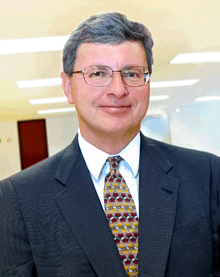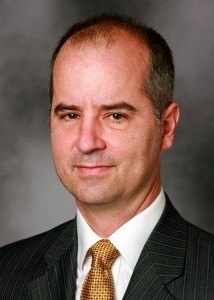By Tung Nguyen, Transcript Correspondent
International economies were dull and dry in the last decade and will be prolonged by Donald Trump in the next few years.
Ian Sheldon, a visiting professor from the Ohio State University, presented his thoughts to Ohio Wesleyan University students and faculty in the Benes room in Hamilton-Williams Campus Center Nov. 15.
“Things are getting better at a slow pace,” Sheldon said.
The U.S., along with Japan and the United Kingdom, will face minimal growths of less than 2 percent in 2017, predicted by the Sputnik News.
On the other hand, Sheldon showed that the economic growths among developing countries are positively forecasted. Both China and India, with the corresponding 6.2 percent and 7.5 percent economic growths, are the new world’s potential challengers.
“Besides, Brazil and Russia will bounce back from the long-term economic recession,” Sheldon said.
Mark Schweitzer, a speaker from the Federal Reserve Bank of Cleveland, agreed with Sheldon that on a large scale, the world economies will slightly improve.
However, both Sheldon and Schweitzer emphasized the downfall on the microeconomics scale. They predicted that the unemployment rates will be higher than the pre-crisis levels.
“The United Kingdom, especially after Brexit, will suffer signi cantly from the currency depreciation,” Sheldon said.
Along with the domestic struggles, the international trade system will also be affected by political changes.
“Trump will end the Trans-Pacific Partnership (TPP) and, as a result, pull down the economy’s growths of not only the United States, but also the other 10 members,” Schweitzer said.
Bob Gitter, an economics professor from OWU, said that by killing TPP, Trump will increase the unemployment rate and market prices.
Furthermore, Sheldon said that president-elect Trump will put a 35 percent tariff on Mexico and 45 percent tariff on China.
“No more cheap labors and no more cheap products,” Sheldon said. “With the economy’s recession, the United States’ citizens will be slightly in troubles.”
Bill Lafayette, another speaker from Regionomics Inc., showed that the central area of Ohio’s economy still remain stable in spite of the recession.
“The area’s population is gradually increasing and luckily, so is the employment rate,” he said.
Gitter said, “The world economies is facing significant changes but it is better than staying stagnate.”


